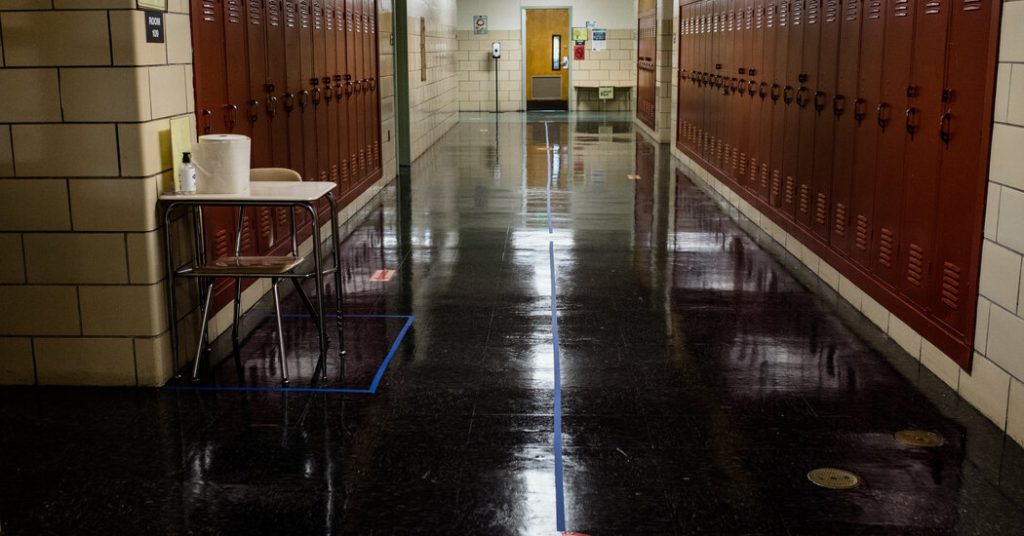School districts across the country are facing budget shortfalls as federal funding meant to help schools recover from the pandemic is running dry in September. This means less money for tutors, summer school, and other recovery efforts. Declining student enrollment is also catching up to districts, forcing them to make tough decisions about cuts that will affect millions of families. These cuts, which were put off during the pandemic, could interrupt the recovery of U.S. students who have not yet made up their pandemic losses. The impact of these cuts will be felt most in low-income and urban school areas that received larger shares of federal aid and have been hit hard by declining enrollment.
Enrollment has been dropping in many districts for years, but the pandemic accelerated this decline. Population trends explain only half of the decline, with the rest driven by sustained interest in private schooling and homeschooling. High inflation in recent years has also driven up costs, leading many districts to give larger raises to remain competitive. However, many states are facing slower revenue growth and may not be able to sustain these raises. Some districts used pandemic aid to fill holes in their budgets, leaving them in a precarious position now that the funds have run out.
While some districts have managed to avoid layoffs, others are planning cuts to programs. Baltimore City Public Schools avoided layoffs by making investments that did not result in abrupt cuts once the relief funds ran out, such as providing tutoring and upgrading facilities. Waterbury, Conn., also avoided layoffs but will have to reduce tutoring contracts and scale back after-school programs. Birmingham, Ala., a district that made outsize academic progress since the pandemic, must now decide which programs to keep. This includes cutting positions financed with stimulus dollars and moving a free after-school program back to a paid model.
The Edmonds, Wash., school district faced cuts to music classes, prompting a local foundation to raise funds to save them. Montgomery County, Md., slightly increased class sizes to save money. In Minneapolis, about 300 teaching positions are being cut due to declining enrollment and a deficit of over $100 million. Hartford, Conn., used stimulus dollars to fund positions like school counselors and social workers but must now shuffle employees to reduce layoffs. These cuts are impacting programs like virtual tutoring and after-school enrichment opportunities, especially in districts serving low-income and urban areas.
Districts across the country are grappling with difficult decisions as federal pandemic aid runs out and declining enrollment impacts budgets. Many districts made short-term investments in programs and staffing to support students through the pandemic, but now face the challenge of maintaining these supports with limited funding. The impact of these cuts will be felt most in low-income and urban school areas that have received significant federal aid and have been hit hard by enrollment declines. Tough choices about program cuts and possible layoffs are looming, with the potential to disrupt the recovery of U.S. students who have not yet made up their pandemic losses.








